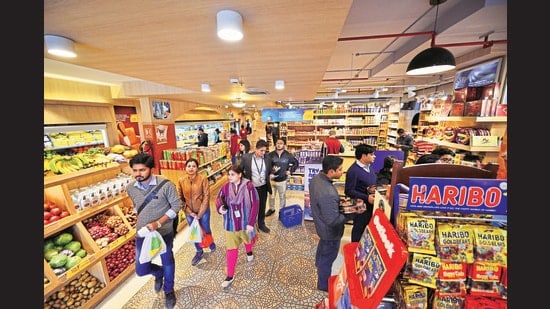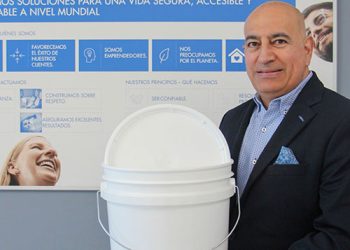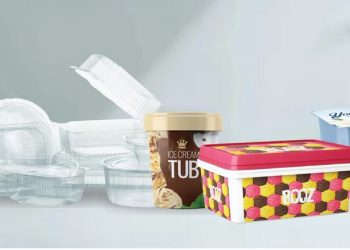The food industry wants the label to be a guideline informing the consumer about the quantity of salt, sugar, sodium and fats in the packet without giving a health warning, saying that the aim should be to enable consumers to make an informed decision and not discourage consumption of packaged food.
India’s food safety authority has decided to mandate labelling on the front of food packets detailing the amount of salt, sugar and fat content and their health impact, but consensus eludes industry and consumer groups about what the labels should say, according to multiple officials and minutes of a meeting of stakeholders called by the authority.
The food industry wants the label to be a guideline informing the consumer about the quantity of salt, sugar, sodium and fats in the packet without giving a health warning, saying that the aim should be to enable consumers to make an informed decision and not discourage consumption of packaged food.
Consumer and advocacy groups want labels to clearly state whether the food is healthy or not, as most customers would not know how much sugar, salt or fat is good or bad for their health if only the quantity is specified.
“We will get a people perception study done by the Indian Institute of Management, Ahmedabad, on what sort of label would people prefer,” Food Safety Standards Authority of India (FSSAI) chief executive Arun Singhal said on the differing views. Once that study comes, draft guidelines and then final ones on the “front of package label” (FOPL) would be issued, he said.
The FSSAI has taken close to eight years to reach this stage as the food industry had been reluctant to have these labels as some other countries such as Brazil and Chile have. In those countries, the label clearly states whether consuming the product would be healthy for people or not. In India, the processed food industry is estimated to be worth $44 billion and growing at a rapid pace of about 24% every year.
At a meeting with all stakeholders called by the FSSAI in June, the industry said the food safety labelling on salt, sugar and fat should be based on serving size basis rather than quantity in the packet as this is what the consumer eats, according to minutes of the meeting accessed by Hindustan Times.
The consumer groups proposed that the label should inform consumers what percentage of food is salt, sugar and fat, and how much higher it is than the permissible limit. And, they said, this should be done by having a reference size of 100g/ml.
The FSSAI accepted the consumer group view saying there is no information available at present on serving sizes. “The acceptability and understanding of 100g/ml as a unit is higher and it enables a rational comparison among products,” the minutes said, quoting the FSSAI.
The suggestion of the food industry to have information about positive nutrients on the labels was rejected, as FSSAI scientists supported the consumer groups, who said that the “first and foremost” aim of FOPL was to inform consumers about negative nutrients in food products, the minutes revealed.
A senior FSSAI scientist, who was not willing to be named, said it was no less than an “achievement” to get the food industry to agree to safety labels on the front of packages, which would be easily readable to consumers.
“The reluctance on the part of the industry was high but we pulled them through,” he said.
Singhal said five types of labels were being considered, including traffic light signs, nutrition score, health star ratings, warning symbols. The FSSAI asked IIM-Ahmedabad to conduct a consumer survey of which type of label would be most understandable to people after the authority found that most of the consumer surveys conducted in western countries about the impact of labels on people had a “geographical bias”.
A 2018 study in Brazil and Chile on the impact of food safety labelling on people had shown that it leads to a reduction in consumption of ultra-processed food products, which are considered bad for human health. Around half of the processed food sold in the United States is ultra-processed, meaning very few natural products are used.
Meeta Kapoor, executive director of the Confederation of Indian Industry (CII), who represented the industry body at the meeting, said they have nothing more to add than what has already been saying. Earlier, the CII had said that it would abide by the FSSAI’s decision on food safety labelling.
Dr Arun Gupta, convener of the Nutrition Advocacy in India in Public Interest (NAPi), said there is a need for proper health safety labelling on processed food products as consumption was increasing and so were the related health hazards.
The WHO has said high consumption of processed food can lead to obesity and non-communicable diseases, which account for 71% i.e 41 million deaths, every year, globally.
“The increase in diabetes and heart ailments among young people can be directly linked with an increase in consumption of highly addictive processed foods and beverages. We are not asking for a ban on them but only to inform people about the food’s health impact. It would help people in taking a more informed decision about what they eat,” Gupta said.
The FSSAI’s 2020 study on pre-packaged food products said that India would become the third biggest consumer of processed food by the end of 2021, after China and the United States, with sales volumes of over 34 million tonnes.
“Factors like increase in per capita income, globalisation, lower prices, evolving preferences and beliefs of the consumer and rapid urbanisation have resulted in changes in diet patterns of the consumer and an increase in the acceptance of processed and pre-packaged foods and beverages,” the study said.
It added that 53% of children consume salted packaged food such as chips and noodles and 56% sweetened ones such as chocolates and ice creams, apart from sugar-sweetened beverages. “Sugar is added to these products to make them addictive,” Gupta said.
To see how many food products adhere to food safety norms, the FSSAI got an evaluation done of major processed foods with baseline nutrient value for 100g/ml, which is also the base for the food safety labels, for fats (total fats, saturated fats and trans fats), sugar (sugar produced by food and added sugar) and sodium (natural salt and added salt) for 1,306 samples of pre-packaged foods and beverages, from 36 food categories.
The study found that 62.8% of the samples failed on all three counts, meaning they had higher sugar, salt and fat than the prescribed levels. If one looks at failure on one ingredient, then 90% of the samples failed to meet the threshold limit prescribed by the FSSAI. “Maximum categories failed on thresholds for energy, total sugar, added sugar, total fat, saturated fat and sodium,” the study said.
Most of the processed foods being sold come under the category of ultra-processed foods, the Global Food Research Programme of the University of North Carolina at Chapel Hill said in a 2018 study.
“UPFs have rapidly displaced unprocessed or minimally processed foods, freshly prepared meals, and traditional cooking in the diet in most countries, causing significant nutritional, social, economic, and environmental disruption and damage worldwide,” the study said, adding it accounts for roughly half or more of total calories consumed in the United States.
FSSAI chairperson and retired Indian Administrative Service (IAS) officer, Rita Teotia, at the meeting said the journey towards FOPL has been long and most of the aspects have been decided upon to the satisfaction of all stakeholders. “Informed choices of consumer need to be the central point in all decisions undertaken on this subject and the label should be easy to understand,” she said while concluding the meeting.
Packaging 360 is a comprehensive knowledge sharing ecosystem for the Indian packaging industry. Our services include an online content platform to deliver news, insights and case studies; organising conferences seminars and customised training; Providing Bespoke Project Consulting, Market Research and Intelligence.







